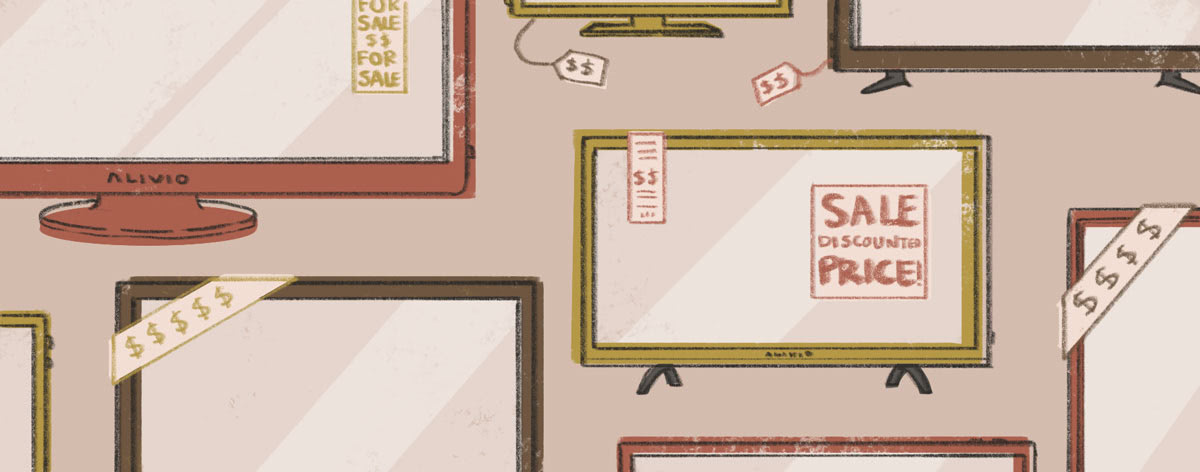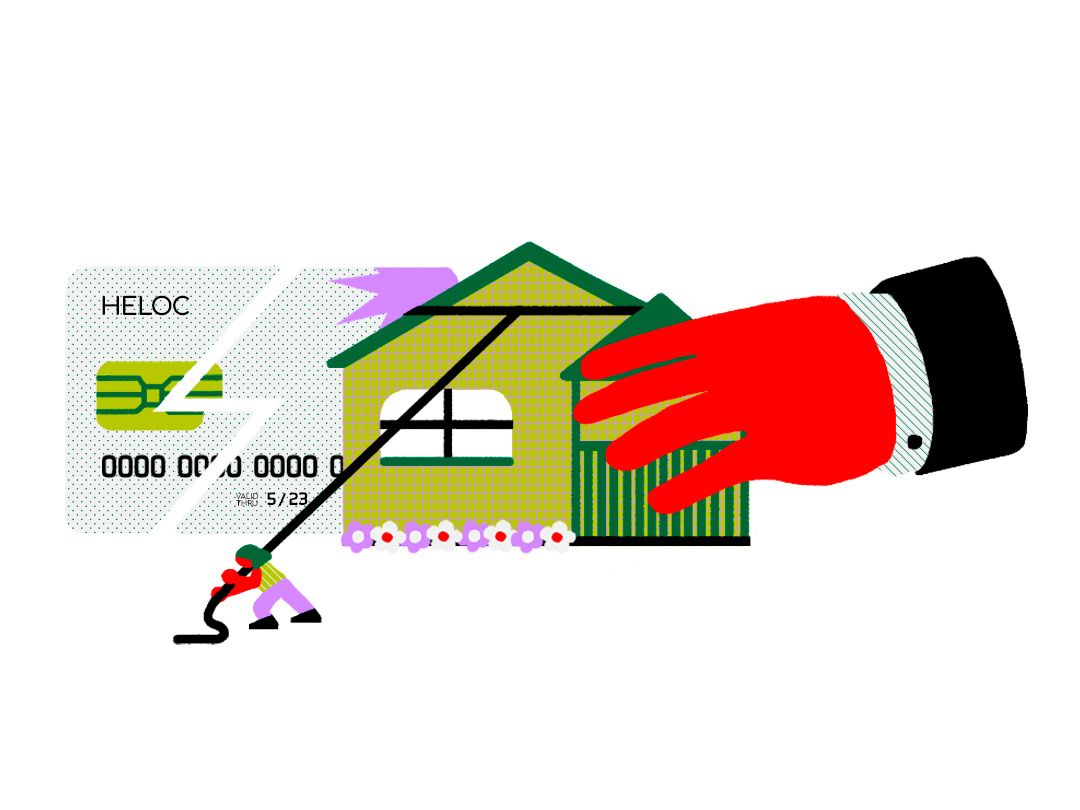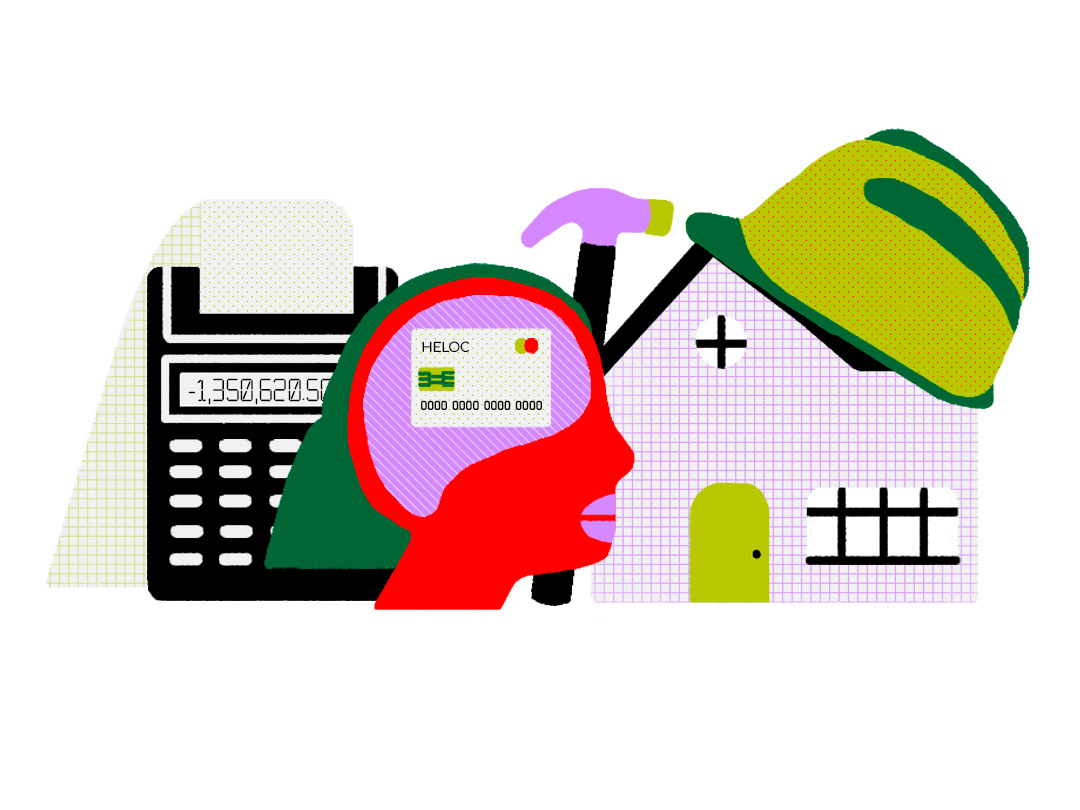

How it Works
Like a credit card, a HELOC is a revolving line of credit that allows you to borrow up to a certain limit, pay it off, and then borrow it again. That limit is determined by a percentage that the lender sets for you called the LTV (loan-to-value). The LTV is the ratio of how much you owe on your home versus how much it’s actually worth.
The amount of money that a bank or credit union will allow you to borrow for your HELOC will depend on what they set as their max acceptable LTV.
HELOC vs Credit Card
While it’s similar to a credit card, a HELOC works slightly differently. One difference is that HELOCs have a time limit. First, there’s the draw period. This is generally a 10-year period where you can withdraw and use the money in a HELOC. You’ll often still need to make payments during this phase and those payments will go toward interest.
Second, is the repayment period. Once you reach this period, you’ll no longer be able to borrow money and will start repaying the principal and the interest you’ve accumulated. The repayment period generally lasts 10-20 years. If you decide to move before the repayment period is over or you’ve paid everything back, the remaining balance will be due before you close.
Qualifying for a HELOC
In order to qualify, you’ll need to prove to your potential lender that you will be able to pay back any money you borrow. Your lender will consider your debt to income ratio (DTI), your credit score, and more. The lender that you choose for your HELOC does not have to be the same as your mortgage provider.

Taking the Risk
Before jumping headfirst into a HELOC, it’s important to be aware of the risks associated with it. First and foremost, a HELOC requires you to put your home up as collateral in exchange for the credit line. This means that if your situation changes drastically and you’re suddenly unable to make your payments, you risk losing your home. You also reduce your equity in your home when you use a HELOC, as you are increasing the debt that you owe against it.
Deciding if a HELOC is right for your situation will mean considering all of your debt, your risk tolerance, and what you want to use the money for.
Plus, a HELOC isn’t free money. There are fees associated with opening and maintaining it. Similarly, HELOCs have variable credit rates. This means that they change with market factors. You may be able to start out with a low rate at the beginning, but it could rise to something that is much less affordable.
There’s also the risk of overborrowing when it comes to a HELOC. With such a high limit, it can be easy to slip into using more than you can afford to pay back and getting yourself into unnecessary debt.
Lowering & Freezing
Lenders can lower or freeze a HELOC. That means that if something happens that significantly changes things from when you first opened the HELOC, the terms of the HELOC could change as well. The lender can lower your approved amount or even refuse to allow you to borrow any more. Some situations where this could happen include if the value of your home drops significantly or if the lender has reason to believe that you will no longer be able to make your payments.

Is a HELOC Right for You?
Deciding if a HELOC is right for your situation will mean considering all of your debt, your risk tolerance, and what you want to use the money for. One of the most common uses for a HELOC is to renovate or improve your home. Interest on HELOC payments used for these purposes can be tax-deductible and may have a lower interest rate than a credit card or other loan options, though that lower rate is not guaranteed to stay.
If you need extra funds and are comfortable with the idea of borrowing against the equity of your home, another option could be a Home Equity Loan. This loan works similarly to a HELOC but, rather than being a credit line, is a lump sum that you borrow and payback. If the risks of tapping into your home equity are too great, it may be better to seek the funds elsewhere.
Neither Banzai nor its sponsoring partners make any warranties or representations as to the accuracy, applicability, completeness, or suitability for any particular purpose of the information contained herein. Banzai and its sponsoring partners expressly disclaim any liability arising from the use or misuse of these materials and, by visiting this site, you agree to release Banzai and its sponsoring partners from any such liability. Do not rely upon the information provided in this content when making decisions regarding financial or legal matters without first consulting with a qualified, licensed professional.

